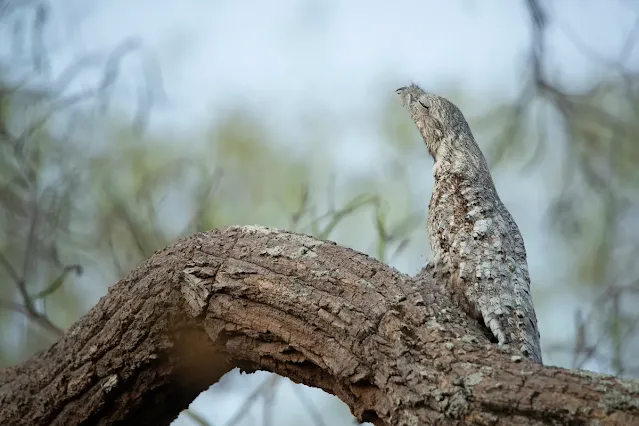The Quirkiest Animals and Their Unique Traits
The Quirkiest Animals and Their Unique Traits
Introduction
Our planet is home to an astonishing variety of animals, each with its own peculiar adaptations. From bizarre defense mechanisms to strange physical features, these animals stand out in the animal kingdom. Here are some of the quirkiest animals and their unique traits.
1. Axolotl (The Smiling Salamander)
A Regenerative Wonder
The axolotl is an aquatic salamander native to Mexico. Unlike most amphibians, it remains in its larval stage throughout its life. This species has an extraordinary ability to regenerate lost limbs, spinal cord tissue, and even parts of its heart and brain.
Scientists study axolotls for their regenerative abilities, hoping to unlock secrets that may benefit human medicine. Sadly, wild axolotls are critically endangered due to habitat loss and pollution.
2. Star-Nosed Mole
The Fastest Eater
The star-nosed mole has one of the strangest noses in the animal kingdom, featuring 22 fleshy appendages that help it sense its surroundings. This unique feature allows it to find and consume food in as little as 120 milliseconds.
This mole thrives in wetland areas and can even hunt underwater, using its sensitive nose to detect prey without relying on sight.
3. Narwhal (The Unicorn of the Sea)
A Tusk with a Purpose
Often called the "unicorn of the sea," the narwhal is a type of whale with a long, spiral tusk protruding from its head. This tusk is actually a tooth filled with sensory nerves, helping it detect changes in its environment.
Scientists believe narwhals use their tusks to sense water salinity, break ice, or even engage in social interactions. They are found in the Arctic waters of Canada, Greenland, and Russia.
4. Leafy Sea Dragon
Nature’s Master of Disguise
The leafy sea dragon, a relative of the seahorse, has elaborate leaf-like appendages that help it blend seamlessly with seaweed and underwater plants. This camouflage protects it from predators.
Unlike seahorses, leafy sea dragons cannot grip objects with their tails. Instead, they rely entirely on their camouflage for survival.
5. The Shoebill
A Prehistoric-Looking Bird
Native to the swamps of central Africa, the shoebill is a large bird with a massive beak resembling a wooden shoe. Despite its comical appearance, it is a formidable hunter, capable of catching large fish and even baby crocodiles.
Shoebills are known for their eerie, motionless hunting stance, waiting patiently before striking with deadly accuracy.
6. The Mantis Shrimp
The Animal with Super Vision
Mantis shrimp have some of the most complex eyes in the animal kingdom. They can detect ultraviolet and polarized light, giving them a broader color spectrum than humans. Their powerful claws can strike with the force of a bullet, making them deadly hunters.
Some mantis shrimp species are "smashers," breaking through shells, while others are "spearers," impaling their prey with lightning-fast strikes.
7. The Saiga Antelope
A Nose Like No Other
The saiga antelope has a large, bulbous nose that filters dust and helps regulate its body temperature in extreme climates. This critically endangered species is found in the grasslands of Central Asia.
Saiga numbers have declined dramatically due to poaching and habitat destruction. Conservation efforts are underway to save this fascinating species.
8. The Blobfish
The World’s Ugliest Animal?
Often labeled the "world’s ugliest animal," the blobfish lives in deep-sea environments where its gelatinous body helps it withstand extreme pressure. When brought to the surface, it loses its shape, resulting in its famously droopy appearance.
Despite its unfortunate reputation, the blobfish is well-adapted to its deep-sea home, where its lack of muscle helps it conserve energy.
9. The Aye-Aye
A Nocturnal Oddity
Native to Madagascar, the aye-aye is a type of lemur with elongated fingers and large, glowing eyes. It uses its long middle finger to tap on tree bark and locate insects, a behavior known as percussive foraging.
Many local myths surround the aye-aye, with some cultures believing it brings bad luck. Unfortunately, these superstitions have led to the killing of aye-ayes, contributing to their decline.
10. The Kakapo (The Flightless Parrot)
A Parrot That Can't Fly
The kakapo is a large, nocturnal parrot from New Zealand. Unlike most parrots, it cannot fly, relying instead on its strong legs to move around. Unfortunately, it is one of the world’s most endangered birds.
Thanks to intensive conservation efforts, the kakapo population is slowly recovering, though it remains critically endangered.
More Quirky Animals
- Pistol Shrimp: Creates shockwaves with its claw to stun prey.
- Proboscis Monkey: Has a large, drooping nose that attracts mates.
- Japanese Spider Crab: One of the largest arthropods, with a leg span up to 12 feet.
- Red-Lipped Batfish: A fish that "walks" on the ocean floor using its fins.
Conclusion
The animal kingdom is full of strange and wonderful creatures, each with its own unique adaptations. From the regenerating axolotl to the peculiar-looking blobfish, nature never ceases to amaze us with its creativity.
These fascinating animals remind us that evolution works in extraordinary ways, producing species that thrive in even the most extreme conditions.
@2025 Haruka Cigem - Curious Facts Explored.

Post a Comment